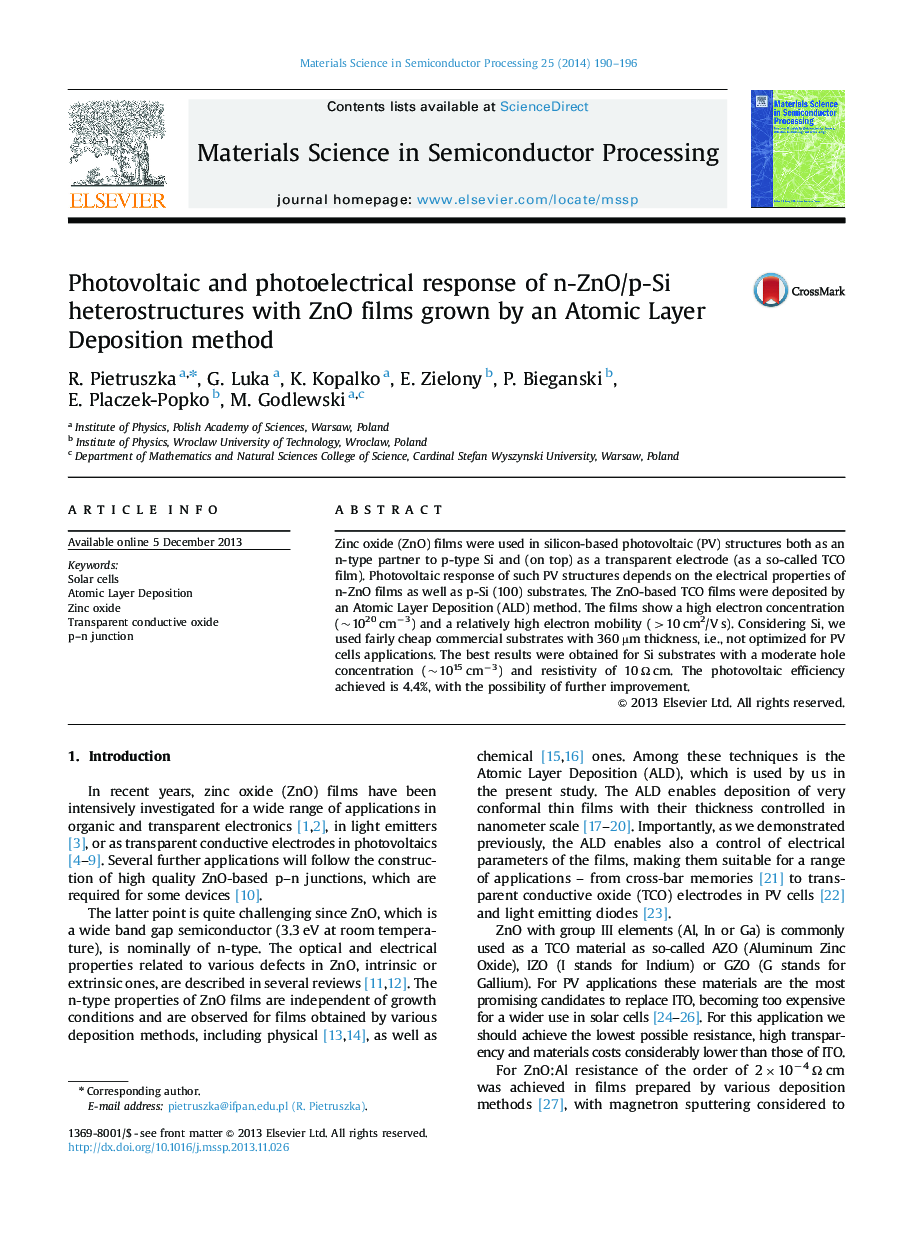| Article ID | Journal | Published Year | Pages | File Type |
|---|---|---|---|---|
| 728545 | Materials Science in Semiconductor Processing | 2014 | 7 Pages |
Zinc oxide (ZnO) films were used in silicon-based photovoltaic (PV) structures both as an n-type partner to p-type Si and (on top) as a transparent electrode (as a so-called TCO film). Photovoltaic response of such PV structures depends on the electrical properties of n-ZnO films as well as p-Si (100) substrates. The ZnO-based TCO films were deposited by an Atomic Layer Deposition (ALD) method. The films show a high electron concentration (~1020 cm−3) and a relatively high electron mobility (>10 cm2/V s). Considering Si, we used fairly cheap commercial substrates with 360 µm thickness, i.e., not optimized for PV cells applications. The best results were obtained for Si substrates with a moderate hole concentration (~1015 cm−3) and resistivity of 10 Ω cm. The photovoltaic efficiency achieved is 4.4%, with the possibility of further improvement.
